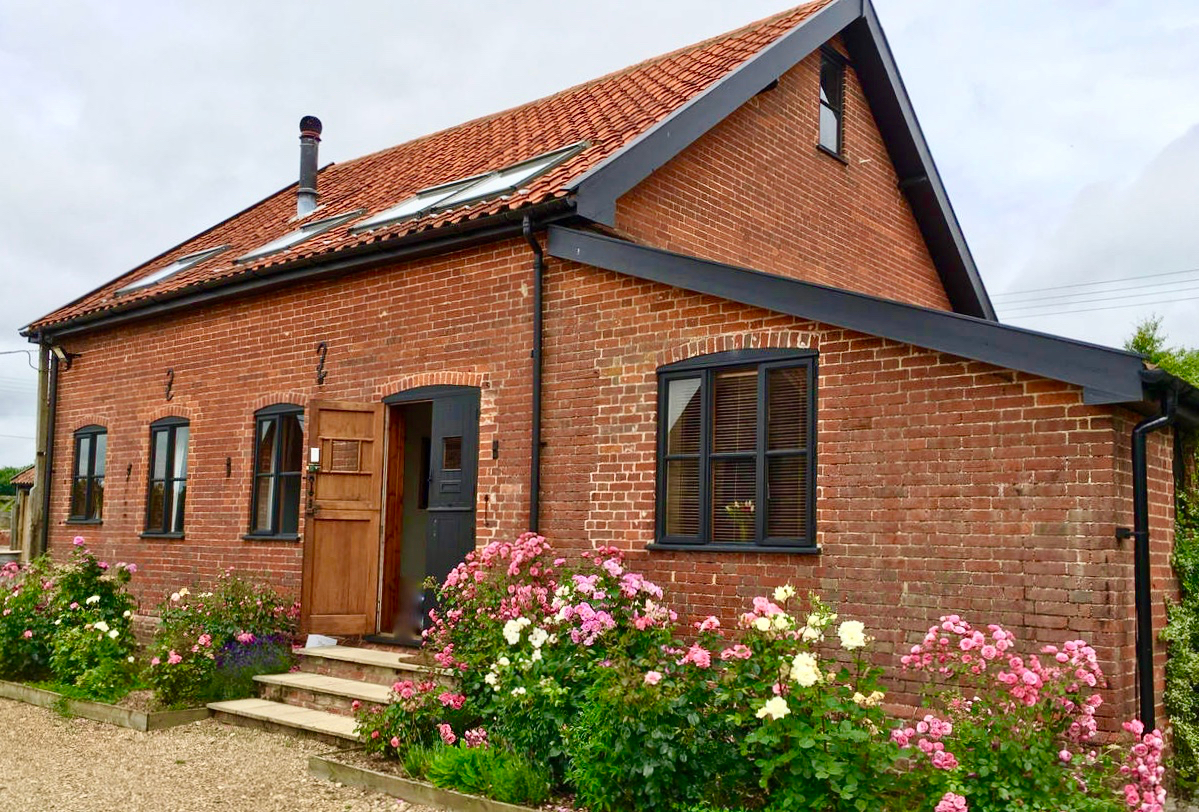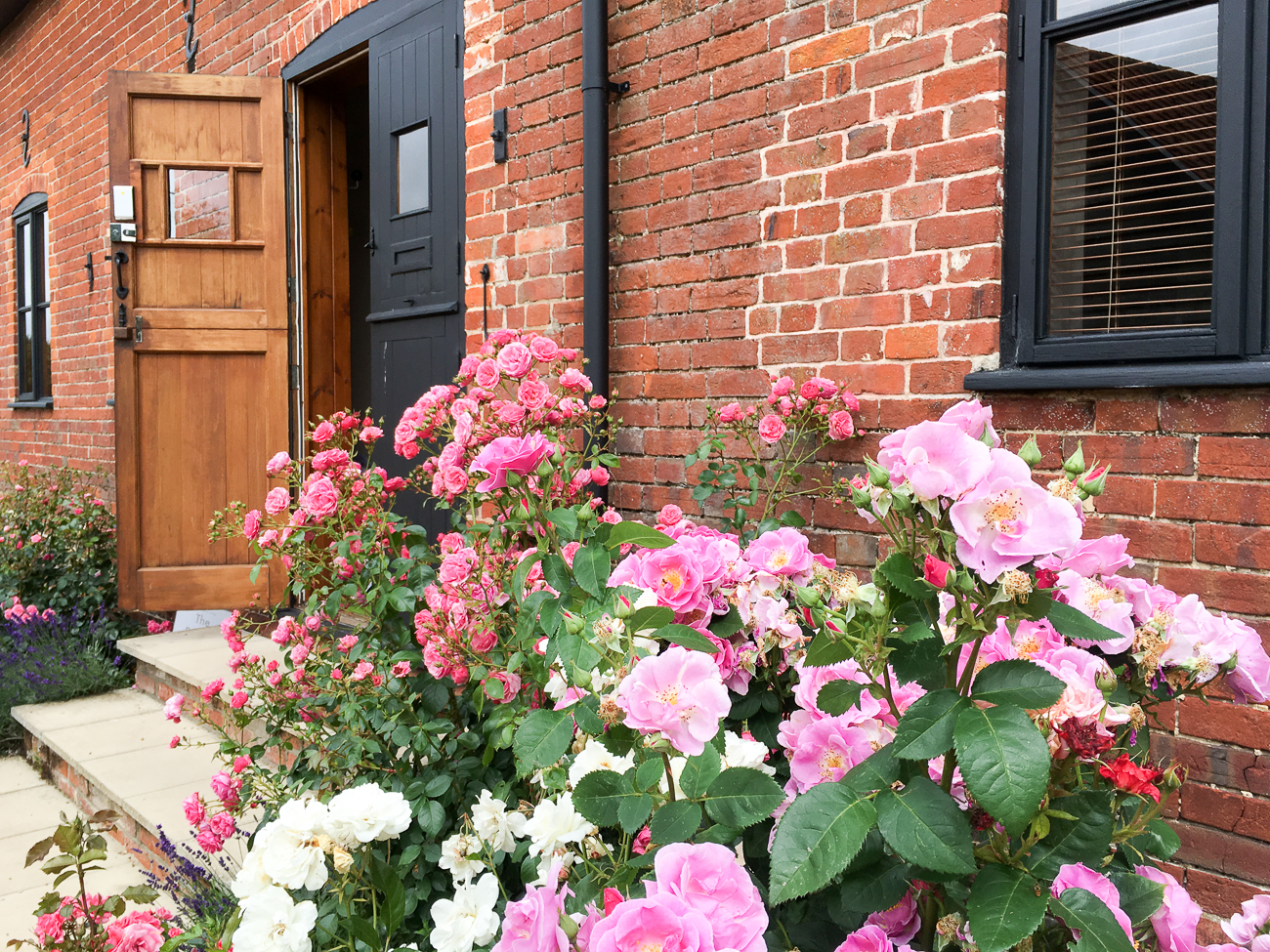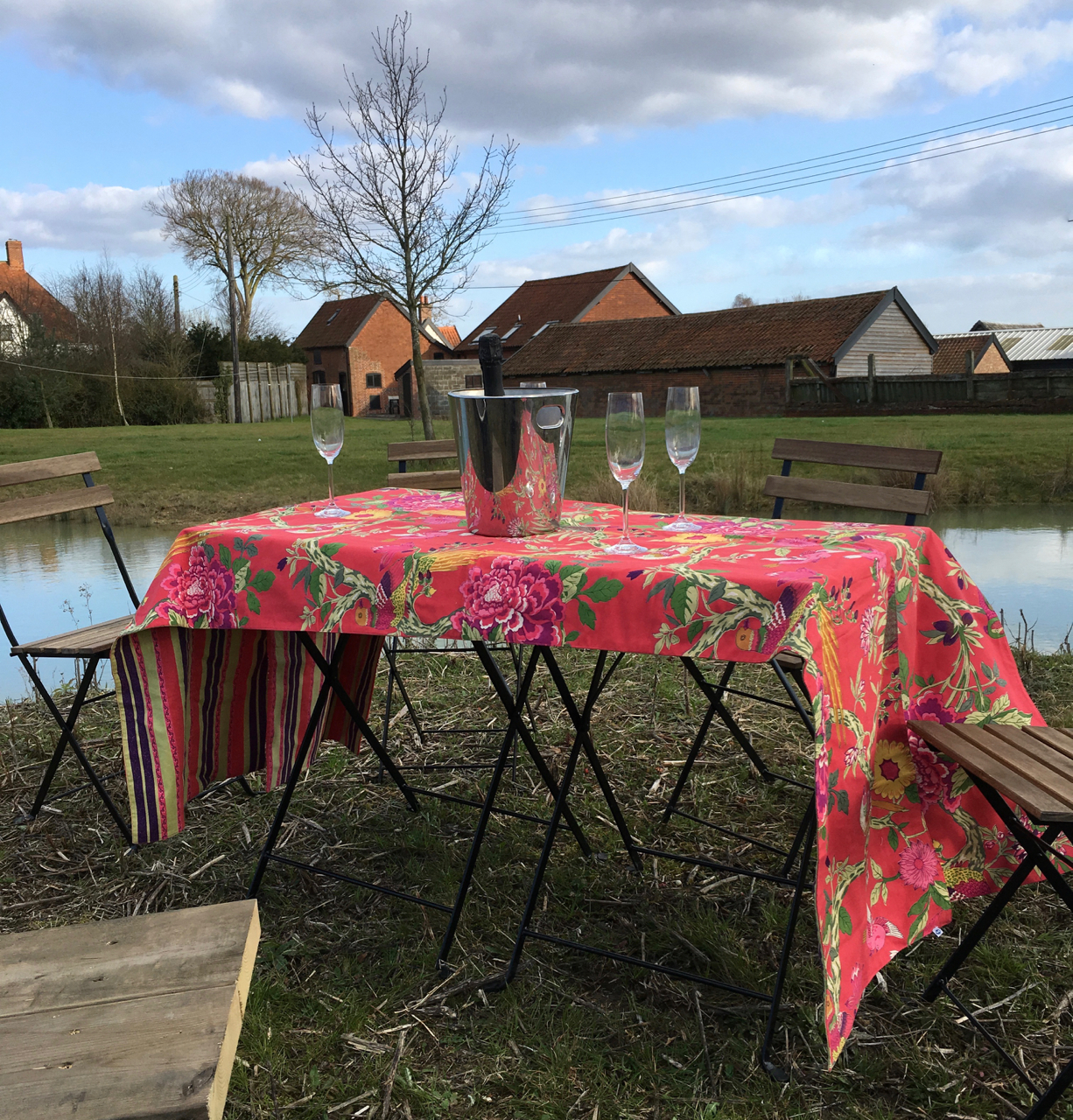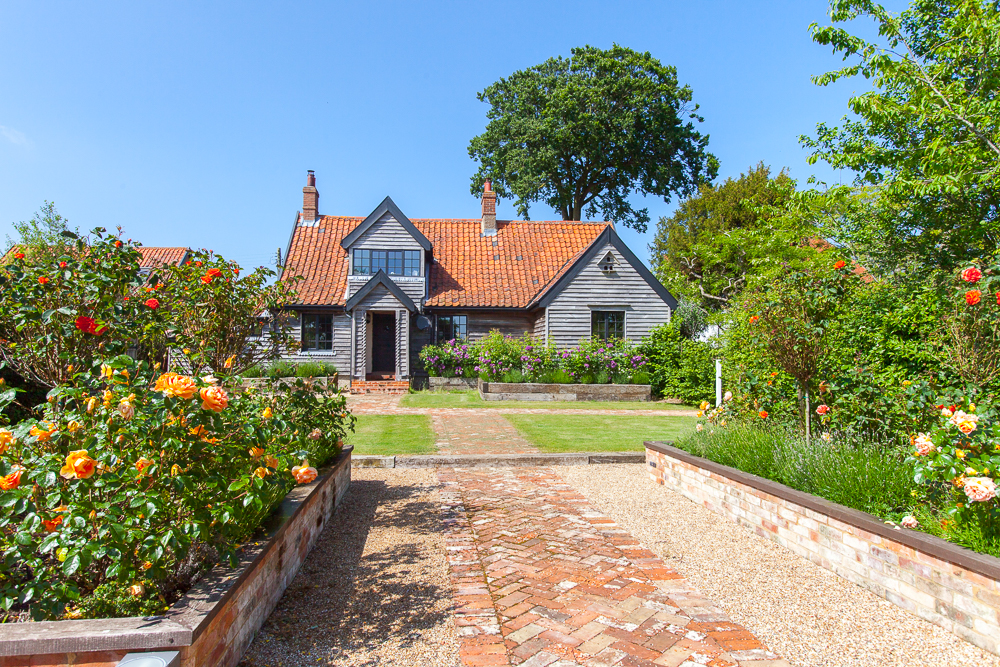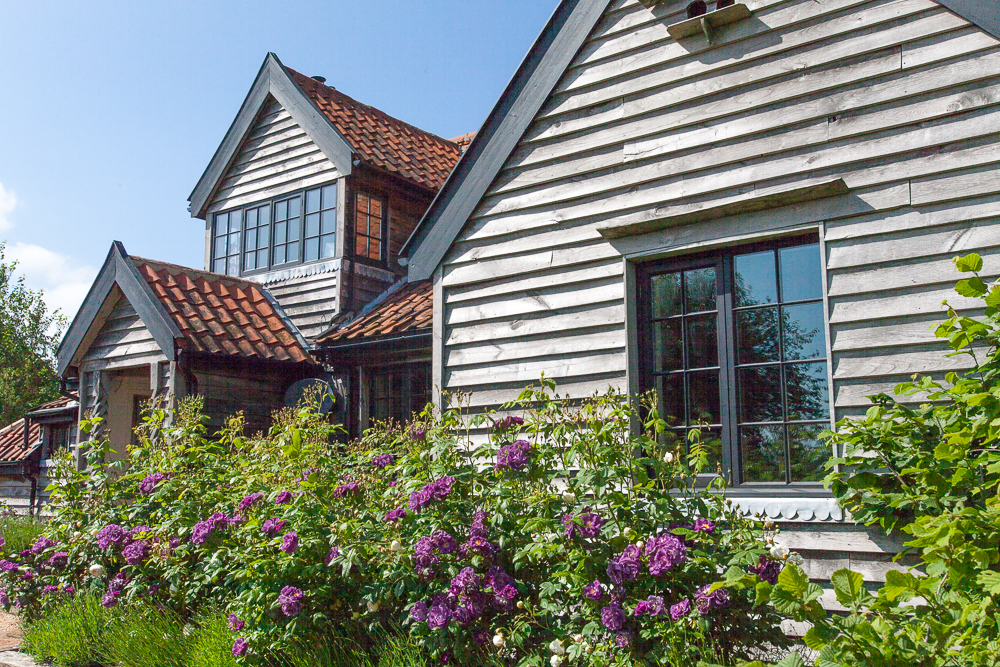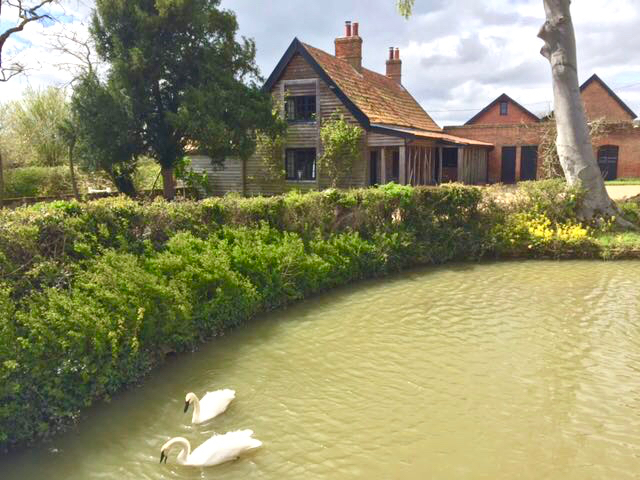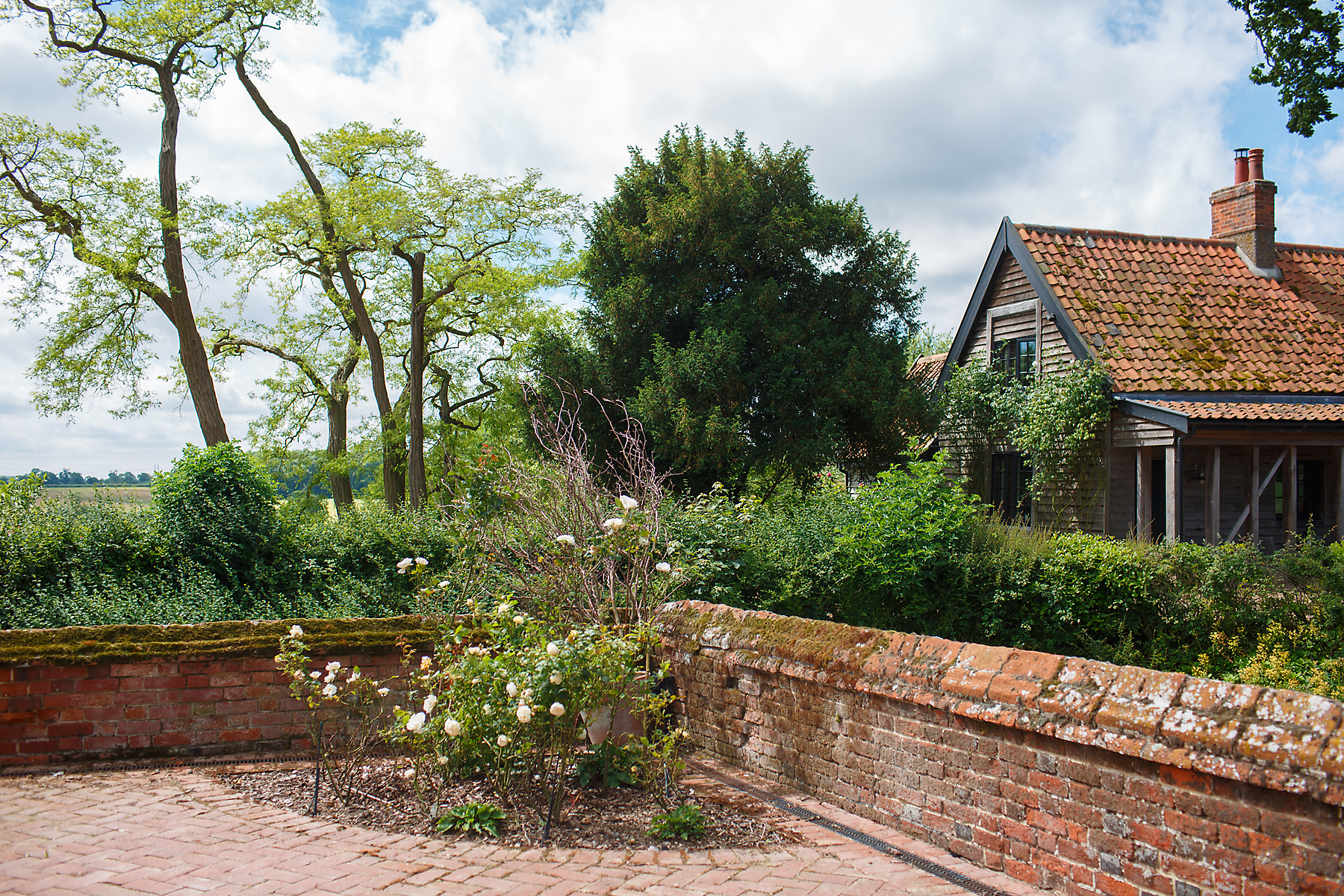
Like falling back in history
RARE AND MAGICAL
A unique medieval hunting lodge
This stunning building was originally a banqueting and sumptuous party house for the rich and famous. Sir John Wingfield was inspired by Dutch architecture and built it as a rare and avant garde experiment in 1472.
Letheringham Lodge is a unique and internationally significant survival from the late Middle Ages. It is the smallest occupied moated site in the county and was originally designed as a ‘display’ building with expensive and flambouyant corner posts which were highly decorative. Sited on a hilltop, the building would have been used to overview the activities of the deer park which surrounded it.
Both moats and deer parks were important ways of displaying lordly power and prestige in the Middle Ages, so there can be no doubt that the Lodge was envisaged as a special building on a special moated site within a special type of landscape.
The word ‘logge’ came to Britain with the Normans and is derived from the Frankish word for shelter. It describes a temporary building or one that people stayed in only for a time. A lodge on the edge of a forest or within a park would shelter a hunting party at need and house a custodian at all other times. The earliest royal lodges had a timber-built hall and a cluster of ancillary buildings protected by a moat. Later came a yen for height to give a overview of the movement of game.
The Wingfield family that built and lived in the Lodge had been powerful landowners and politicians in Suffolk from the mid 14th century well into the 18th century. Indeed, Sir John Wingfield's son, Sir Antony Wingfield, was an eminent politician, serving as a soldier and bodyguard, vice chamberlain to King Henry VIII, privy counsellor, responsible for introducing legislation into the House of Lords, including that for the disillusion of the monasteries. He was the King’s guard at the entrance of Anne of Cleaves into the country at Deal, and by marriage related to the de Vere family, the Dukes of Oxford.
Sir Anthony Wingfield's cousin was the Duke of Brandon, who later married Mary Tudor, sister to Henry VIII. His brother Sir Richard Wingfield married Bridget Wiltshire who was a close friend to Anne Boleyn and their correspondence was used as evidence to behead her.
Today, the current owners are working artists and restoring the buildings by offering holiday accommodation for the pleasure of guests. Why not come and stay and discover this medieval gem for yourselves?
The Glorious Guest House
The Cosy Coach House
Romantic Rose Cottage
Fairytale Swan Cottage
We would like to thank everyone who has helped us transform this beautiful house and setting from being practically derelict to a haven of tranquility and wildlife.






